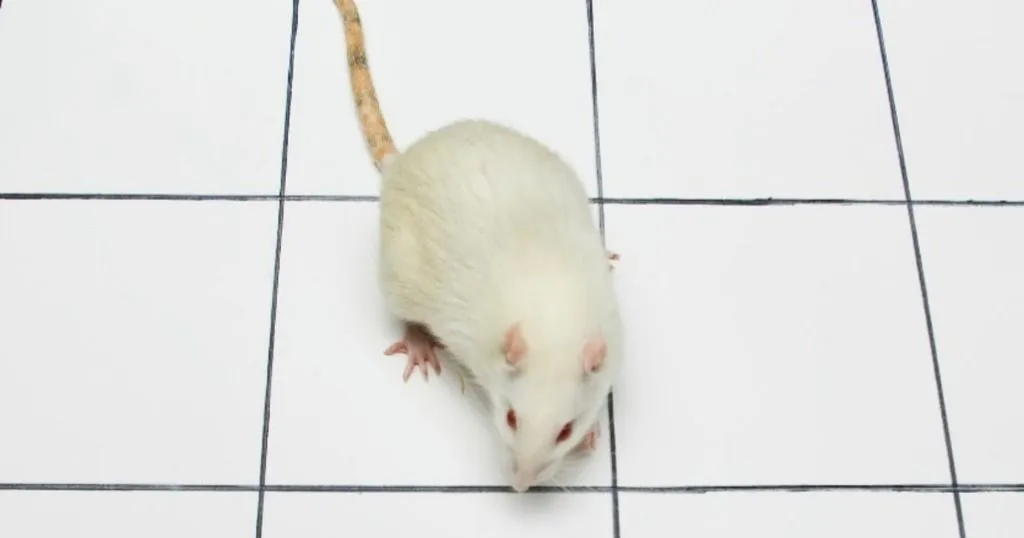How to find an animal model for obsessive-compulsive disorder (OCD)
We all show some form of compulsive behavior. I triple check to make sure I locked my car, knowing that it’s locked but still feeling the need. But what if compulsions, rituals, and repetition rule your everyday live?
Posted by
Published on
Thu 12 Apr. 2012
Topics
| Behavioral Patterns | EthoVision XT | Mice | Rats | Repetitive Behavior | T-patterns | Theme | Video Tracking |

The power of temporal behavioral pattern analysis and video tracking
We all show some form of compulsive behavior. I triple check to make sure I locked my car, knowing that it’s locked but still feeling the need. But what if compulsions, rituals, and repetition rule your everyday live?
Obsessive-compulsive disorder (OCD) is a complex psychiatric disease that can have a profound impact on the lives of those affected by it. Typical single-drug treatment (selective serotonin re-uptake inhibitors) fails to help a large percentage of patients, so researchers are trying to come up with more effective therapies.
In search of the next top-model
Figuring out the biomechanical basis of OCD and finding more successful methods of treatment depends largely on research with animal models. However, finding an adequate model remains difficult.
In 2010 de Haas et al. published a paper on an OCD model using quinpirole on rats. They aimed to quantify the dimensions of ritualistic ‘compulsive-like’ behavior induced by quinpirole with the use of EthoVision automatic video tracking and with Theme, a software program that detects temporal patterns in behavior.
Finding patterns of behavior
Rats were studied in an open field with four objects. The total distance moved, number of returns to the home base, number of different behavioral patterns, and the duration, length, and complexity of behavioral patterns were of main interest.
In comparison to saline-treated rats (control group) the quinpirole-treated rats showed a significantly smaller behavioral repertoire. Their behavioral patterns were also less complex and shorter in duration and number of behaviors, and showed a two-fold higher occurrence than the patterns of the control group. Furthermore, quinpirole rats showed an excessive number of home base visits.
Model versus patient
The repetition shown in this rodent OCD model matches the repetitive behavior (increased performance of the same behavior) seen in OCD patients. However, the smaller and shorter behavioral repertoire of the quinpirole rats does not, as OCD patients tend to have complex ritualistic behavioral patterns. Detailed behavioral pattern analysis led to the conclusion that this rat model is not entirely accurate, and researchers continue their search for a better one.
What’s in the genes?
In a second publication, de Haas et al. (2012) investigated whether genetic background has anything to do with this. And indeed, it does. This time they used two different strains of mice: A/J mice, which have shown to be more sensitive to develop compulsive-like behavior, and C57BL/6J mice. The same behavioral tests were performed.
One mouse vs the other
Left untreated (saline control groups), the C57BL/6J mice showed a greater behavioral repertoire and more motor activity than A/J mice, while the rate of repetition in behavioral patterns was the same.
Treated with quinpirole, A/J mice became more active and visited more zones of the open field, while this effect was not seem within the C57BL/6J groups. The C57BL/6J mice did however seem to focus more on specific parts of the open field.
The rate of repetition was increased by quinpirole in both strains with a similar effect. Interestingly, the number of patterns showed a dose dependent increase in A/J mice, and a dose dependent decrease in C57BL/6J mice.
And the winner is…
With this study de Haas et al. showed the importance of a genetic background. Compared to the quinpirole rat model used in the 2010 study (and to the C57BL/6J mice), the quinpirole A/J mice model in this study showed more similarity to actual OCD patient behavior, with a more complex behavioral repertoire and high rates of repetition.
What do you think?
These papers show the power of discovering temporal behavioral patterns, as does the paper described in this recent blog. What do you think? Are behavioral patterns important? Do you know of research on other disorders that could benefit from the detailed analysis of temporal behavioral patterns? Leave your thoughts in the comment section below!
Further reading
- De Haas, R.; Nijdam, A.; Westra, T.A.; Kas, M.J.H.; Westenberg, H.G.M. (2010) Behavioral pattern analysis and dopamine release in quinpirole-induced repetitive behavior in rats. Journal of Psychopharmacology, 25(12), 1712–1719.
- De Haas, R.; Seddik, A; Oppelaar, H.; Westenberg, H.G.M.; Kas, M.J.H. (2012). Marked inbred mouse strain difference in the expression of quinpirole induced compulsive like behavior based on behavioral pattern analysis. European Neuropsychopharmacology, article in press, doi:10.1016/j.euroneuro.2012.01.003
More product information: EthoVision.
Related Posts

Horses: behavioral research, physiology and biomechanics

